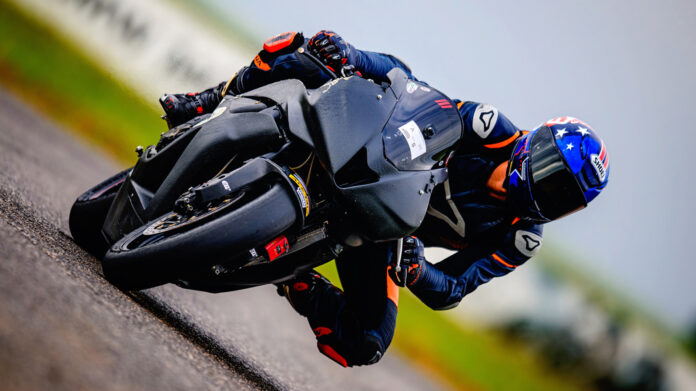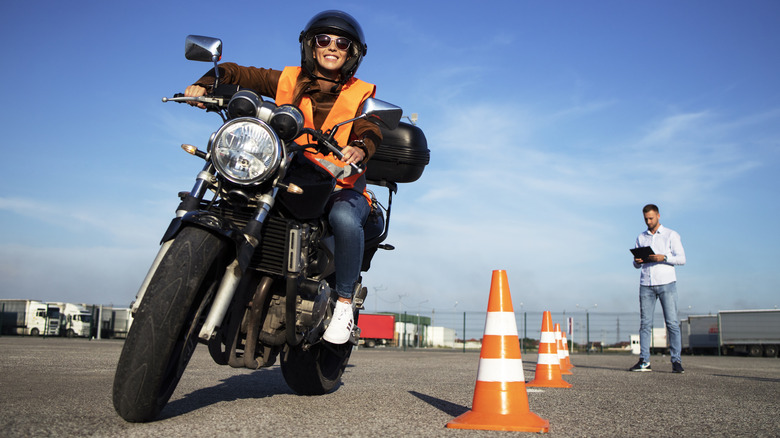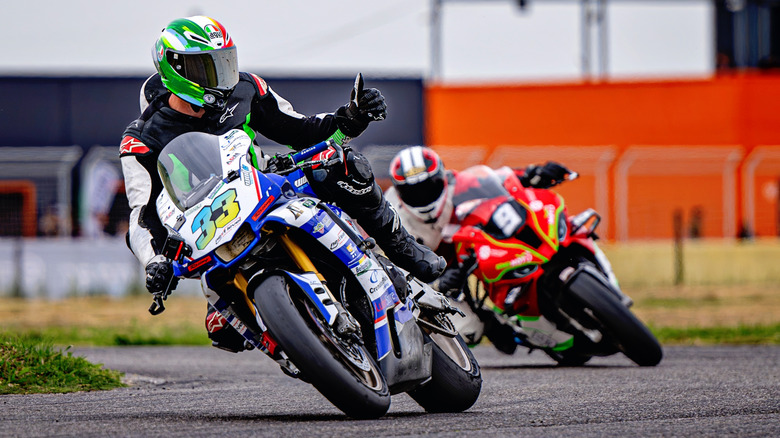Countersteering isn’t motorcycling black magic, it’s just the physics of how motorcycles steer. For most riders, this phenomenon occurs naturally. You don’t put much thought into it, or you might be thinking about it wrong, but paying attention to how it happens should help you unravel the secret to better steering control and higher lean angles. The act is simple: push the right bar, the bike leans right, push harder, it leans more. Let up and it straightens out. That’s it. No complex theory or voodoo, just cause, effect, and a whole lot of muscle memory. Most of us picked it up bombing around on bicycles as kids, long before we knew what to call it. Once it’s locked in, you don’t question it. You just lean, turn, and ride like your brain’s doing the math in the background, because, well, it is.
The faster you go, the more dramatic this shift becomes. Above about 10-15 mph, countersteering becomes essential, not optional. Once speed builds, you’re not turning the handlebars into the curve, you’re pushing them away to get the lean you need. By pressing on the handlebar, you’re actually steering the front wheel slightly away from the direction you want to go. That small input creates a moment of instability, which causes the bike to lean into the turn. It feels strange at first, but it’s exactly what lets you carve corners with control and precision.
Lean angles, fake forces, and real grip
Once you’re leaned into a turn, centripetal force (aka real force) keeps the wheels moving in a circular path while centrifugal force (aka fake force) pushes it outwards and wants to keep them traveling in a straight line. This balance is what keeps the motorcycle from falling. Although in reality, it’s the lateral grip of the tires countering the momentum of the motorcycle’s mass wanting to go straight.
So, the steeper the turn or the faster you go, the more lean angle you need to stay on course. If a bike didn’t lean into a turn, the forces pulling it outward would try to stand it up or send it offline. Cue nasty highsides. Every corner at a given speed has an ideal lean angle where everything balances perfectly. Gravity pulls down, momentum pushes out, and the tires grip just right. Get that balance right, and the bike tracks smoothly through the turn without drama. And the next time you’re panicking before a motorcycle road test, now you know how to take that box U-turn.
Mastering countersteering matters more than you think
If you’ve ever had to dodge a car that jumped a stop sign, you’ve probably used countersteering without realizing it. At anything above jogging speed, trying to swerve by turning the handlebars toward where you want to go just doesn’t work. You push away from the turn first to get the bike leaned over. It’s fast, instinctive, and critical.
That’s why motorcycle safety courses hammer it early. Parking lot drills like push-left-go-left teach your brain and muscles to make the correct move when it counts. Once it becomes second nature, you can lean into a corner with confidence rather than hesitation. Feeling smoother and quicker on the twisty roads is also a bonus.
So head to an empty parking lot to practice some figure-of-eight exercises or sign up for a rider course that drills this concept into you for good, and practice, then practice some more. In the world of motorcycling, irrespective if you decide to buy a naked bike or a sportbike, knowing why your bike behaves the way it does isn’t just nerdy, it’s a survival skill.





